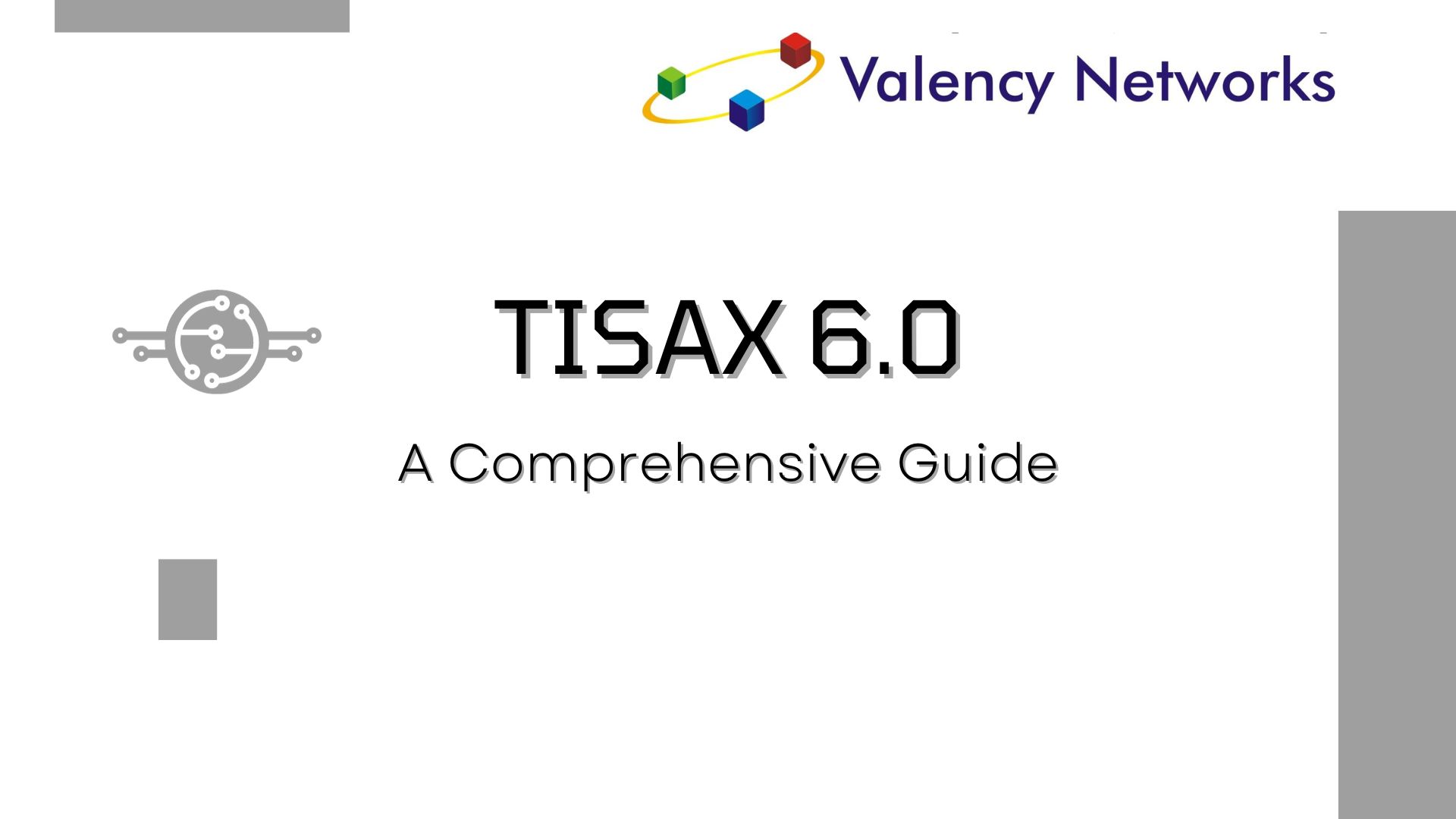- DORA Compliance – A Complete Guide by Valency Networks - 31/01/2025
- Is ICMP Timestamp Request Vulnerability worth considering - 31/12/2024
- Understanding Threat Intelligence in ISO 27001-2022 - 21/11/2024
Exploring TISAX Version 6: A Comprehensive Guide
Introduction: In the ever-evolving landscape of cybersecurity, TISAX (Trusted Information Security Assessment Exchange) plays a crucial role, providing a standardized framework for assessing and ensuring the information security of organizations, particularly in the automotive industry. This article delves into the significance of TISAX, introduces its latest iteration – version 6, highlights the key differences from its predecessors, and outlines the path companies should follow for migration.
Understanding TISAX:
TISAX is a framework designed to assess and enhance information security in the automotive sector. It facilitates the exchange of sensitive information between organizations securely. This is especially critical given the interconnected nature of the automotive industry, where collaboration and information sharing are paramount.
Importance of TISAX:
TISAX is vital for several reasons. Firstly, it instills confidence among stakeholders, assuring them that organizations adhere to robust cybersecurity standards. Secondly, it fosters a secure environment for information exchange, protecting against cyber threats that could compromise sensitive data. In an era where cyber-attacks are increasingly sophisticated, TISAX provides a standardized approach to cybersecurity.
TISAX Version 6 – What’s New:
Version 6 represents a significant evolution of the TISAX framework. It incorporates the latest advancements in cybersecurity and addresses emerging threats. Some key features include enhanced risk assessment methodologies, updated security controls, and improved alignment with international standards.
Differences from Previous Versions:
Version 6 introduces notable changes compared to its predecessors. These changes are aimed at making the assessment process more robust and reflective of the evolving threat landscape. The article will detail these changes, covering areas such as assessment criteria, scope, and reporting.
Path for Companies to Adopt TISAX Version 6:
1. Preparation Phase:
- Internal Assessment: Conduct a thorough internal assessment to identify existing cybersecurity measures, potential gaps, and areas that need improvement.
- Team Formation: Assemble a dedicated team responsible for overseeing the migration process, comprising cybersecurity experts, IT professionals, and relevant stakeholders.
- Documentation Review: Review and update existing documentation, policies, and procedures to align with TISAX Version 6 requirements.
2. Engagement with Accredited Assessment Provider:
- Selection Criteria: Choose an accredited TISAX assessment provider based on their expertise, reputation, and alignment with your organizational needs.
- Initial Consultation: Schedule an initial consultation with the selected provider to discuss the scope, timelines, and specific requirements of the TISAX assessment.
3. Scope Definition:
- Identification of Assets: Clearly define and document the scope of the assessment, identifying all relevant assets, systems, and processes that fall within the TISAX framework.
- Risk Assessment: Conduct a comprehensive risk assessment to determine potential threats, vulnerabilities, and risks associated with the identified scope.
4. Security Controls Implementation:
- Align with TISAX Requirements: Implement security controls specified in TISAX Version 6, ensuring that they are integrated seamlessly into existing processes.
- Continuous Monitoring: Establish mechanisms for continuous monitoring of security controls, emphasizing real-time threat detection and response.
5. Documentation and Evidence Gathering:
- Document Compliance: Prepare and organize documentation evidencing compliance with TISAX Version 6 requirements, including policies, procedures, and evidence of security control implementation.
- Data Collection: Gather relevant data and evidence to support the assessment process, such as incident response plans, security incident records, and penetration testing results.
6. Assessment Conduct:
- Collaboration with Assessors: Collaborate closely with the assessment team during the on-site or remote assessment process, providing necessary access and information.
- Clarifications and Feedback: Address any queries or clarifications raised by assessors promptly, fostering open communication throughout the assessment.
7. Remediation and Improvement:
- Action Plan Development: Develop a comprehensive action plan based on the assessment findings, outlining specific steps for remediation and improvement.
- Continuous Improvement: Establish a culture of continuous improvement, regularly reviewing and updating cybersecurity measures to adapt to evolving threats.
8. Post-Assessment Activities:
- Audit and Verification: Conduct internal audits to verify the effectiveness of implemented security controls and address any identified shortcomings.
- Documentation Update: Update all relevant documentation based on assessment outcomes and any changes in organizational processes.
By following these detailed steps, companies can navigate the adoption of TISAX Version 6 effectively, ensuring a robust and compliant cybersecurity framework. This structured approach contributes to a seamless migration process and strengthens the organization’s overall cybersecurity posture.
Migration for Companies Certified with Older Versions:
For companies already certified under earlier versions of TISAX, migrating to version 6 is crucial for maintaining compliance and staying ahead of emerging threats. This section will offer guidance on the specific steps, considerations, and potential challenges these companies might encounter during the migration process.
How Valency Networks works as a TISAX Consultant?
Valency Networks stands as a distinguished leader in the realm of information security, offering unparalleled expertise and a proven record of accomplishment in the automotive sector. As a trusted compliance partner, Valency Networks plays a pivotal role in assisting companies on their journey to achieve TISAX certification. Leveraging its extensive experience, Valency Networks conducts meticulous internal assessments, guiding organizations through the intricacies of TISAX compliance. The company’s seasoned team of cybersecurity professionals collaborates closely with clients, meticulously aligning their existing cybersecurity measures with the stringent requirements of TISAX.
Valency Networks ensures a seamless transition to TISAX certification by providing comprehensive support in scope definition, security controls implementation, and documentation preparation. With a commitment to excellence, Valency Networks not only facilitates the certification process but also empowers companies to fortify their information security framework, contributing to a resilient and compliant automotive ecosystem.
Conclusion:
In conclusion, TISAX Version 6 represents a pivotal step forward in automotive cybersecurity. This article has explored the framework’s significance, highlighted the key features of the latest version, and provided a roadmap for companies to adopt and migrate successfully. By embracing TISAX Version 6, organizations contribute to a more secure and resilient automotive ecosystem.

